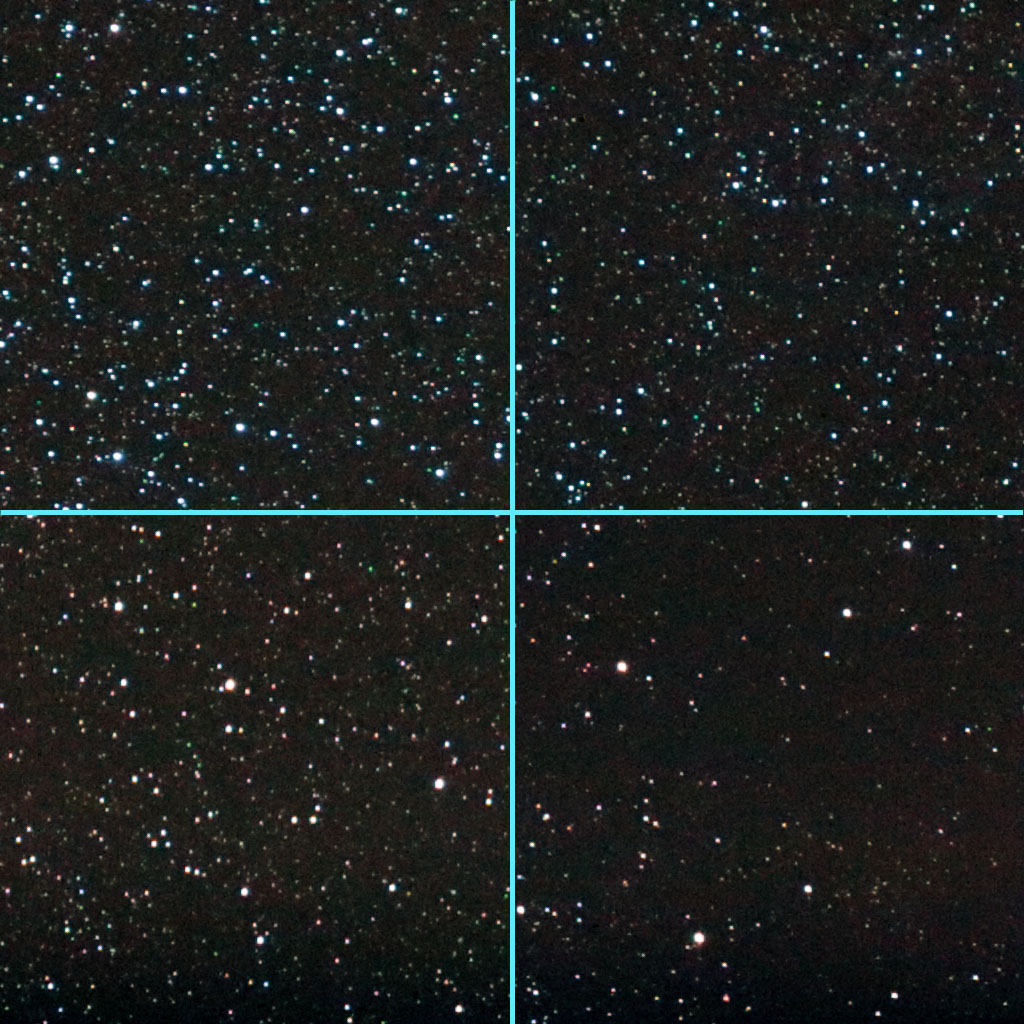I was able to capture some test images last night with the Star71 scope and Canon EOS 6D camera. These were all unguided captures of 30 seconds duration, manually focused using live view mode. I got 4 shots of each target and also captured 4 dark frames at each ISO setting (3200 for Orion and 12,800 for M103). I averaged the dark frames and subtracted them from each light frame, then averaged the light frames (without adjusting their alignment). Note that the “fog” from light pollution brought the black level up to almost 50%, higher than it should be, and limiting the useful range. All the images shown here have been processed to restore the black level and stretch the useful image range. The camera produces a 20 megapixel frame, roughly 5400 by 3600 pixels (after working for years with the 8MP frames from my CCD camera these images seem enormous!).
The Portland light bubble is to the south of me, so I captured the star field around M103 (to the north, but at fairly high elevation) to test the optics. Here’s the whole frame:
And here is a 1:1 crop of each corner:
Ignoring the noisy background (from very high ISO and minimal noise reduction), I am very pleased with the sharpness and lack of chromatic aberration all the way out to the corners. I was expecting to see at least a little radial elongation, but the stars are quite well formed. The upper corners look slightly softer than the lower, but that is probably from slight tilt in the camera mounting (using the T ring supplied with the Star71 scope). I plan to customize my MRT adapter to work with the 48mm threads on the Star71, which might help with the tilt problem.
Now for something more fun, I framed the region from the Flame Nebula to the Orion Nebula, as I mentioned in yesterday’s post:
In this case I had to do additional processing to remove the gradient in the background level caused by the light pollution from Portland. And that red line in the lower right is an airplane.
You can just barely see the Horsehead Nebula. If this camera were modified for H-alpha sensitivity it would show up much better, but I don’t plan to do that – not for a while, anyway. It’s pretty impressive how much color is captured in the Orion Nebula, but that is all about how ridiculously bright this nebula is, not how sensitive the camera is.
Here’s a 1:1 crop of the Orion and Running Man Nebulae:
That’s not a great image of Orion, but when you consider that it’s just 2 minutes of unguided exposure and manually focused, it’s pretty impressive. There is a light vertical line near the bottom center that I can’t explain. It’s not perfectly vertical, so it’s probably not a defect in the camera, but it doesn’t really look like a satellite either. I didn’t notice it until I did this crop, so I’ll have to investigate it further.
In summary, I’m quite pleased with both the camera and the scope. At the next opportunity I’ll test the camera with some lenses, including the Sigma 18-35 f/1.8.



